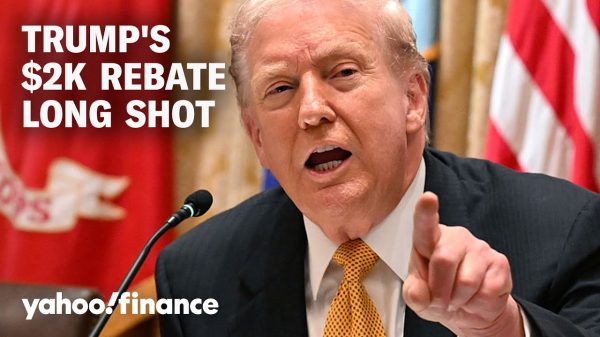Investors have entered “a new macro regime” with monetary policy that probably will be “tight” for the long term and is shifting market opportunities in an unfriendly backdrop for broad asset-class returns, according to BlackRock’s 2023 midyear outlook report.
Central banks may be “holding tight” as they continue to lean against inflationary pressures, representing a break from monetary policy being systematically easy before the pandemic when low interest rates prevailed, said Jean Boivin, head of BlackRock Investment Institute, during a media briefing on the report at the asset manager’s New York headquarters on Wednesday.
In BlackRock’s view, investment opportunities will be thematic, he said, citing five mega forces: artificial intelligence, aging populations, climate-related concerns spurring a transition to a low-carbon economy, a reshaping of the financial system as private credit expands, and a globalization “rewiring” that involves a reorganization of supply chains.
Meanwhile, economic growth has been “stagnating” and core inflation remains “stubbornly sticky,” said Boivin. BlackRock recommends tilting portfolios toward quality in equities and fixed income, while looking for “granular” opportunities, according to its midyear outlook report.
With interest rates expected to stay higher for longer, “income is back,” but in the slowing growth environment the firm favors investment-grade debt over high-yield, said Wei Li, global chief investment strategist at BlackRock, during the media briefing. She said the front-end of the Treasury-market yield curve is still “attractive.”
Central banks in emerging markets are further ahead in their interest rate-hiking cycle compared to the U.S., said Li, creating debt investment opportunities in such regions as they may be closer to cutting interest rates.
“We prefer Brazil and Mexico in EM local-currency debt,” the BlackRock report says. Brazil recently signaled rate cuts could be on the horizon, said Gargi Chaudhuri, BlackRock’s head of iShares investment strategy for the Americas, during the media briefing.
Higher yields available in U.S. fixed income have created a cushion for investors should the Federal Reserve proceed with another rate hike, according to Chaudhuri. Last year bonds broadly suffered losses as the Fed aggressively raised rates from near zero to battle high inflation.
“Even if the Fed were to raise rates higher than current market expectations, the carry earned from higher coupons can be sufficient to counter losses realized by rising rates,” Chaudhuri said in her iShares 2023 midyear outlook report. The Bloomberg US Aggregate Bond Index “now yields close to 4.7% and has a duration (or sensitivity to interest rates) of 6.3 years,” her report says, citing data from June 20.
The chart below, which was highlighted in the iShares report, shows modeled returns for the Bloomberg US Aggregate Bond Index based on changes in 10-year Treasury yields
TMUBMUSD10Y,
The iShares Core U.S. Aggregate Bond ETF
AGG,
has gained 2.5% this year through Tuesday on a total return basis, according to FactSet data.
Meanwhile, the iShares TIPS Bond ETF
TIP,
which provides exposure to inflation-protected U.S. Treasury bonds, “makes sense” as an investment opportunity, Chaudhuri said at the briefing.
Within the stock market, BlackRock Investment Institute says in its report that developed-market equities remain “the biggest building block by far in our portfolios, especially U.S. stocks, even as we slightly underweight them.”
The U.S. stock market has rallied so far this year, with the S&P 500
SPX,
up around 14% through Wednesday, according to FactSet data.
The firm has “an overweight to AI as a mega force,” said BlackRock. “Our tilt toward quality already captures AI beneficiaries.”
BlackRock has gone “granular to achieve portfolio breadth,” saying it likes Japanese stocks within developed markets while preferring emerging-market equities, according to the report.
“Slowing growth and sticky inflation in major economies underpin our preference for emerging markets” and income, BlackRock said.
Aging populations, which “generally poses a bigger challenge for developed markets,” result in worker shortages, “a key constraint fueling U.S. inflation now as a tight labor market keeps wage growth elevated,” according to the report.
Meanwhile, “geopolitical fragmentation, like the strategic competition between the U.S. and China, is set to rewire global supply chains,” said BlackRock, saying the rewiring is “set to drive up production costs.”
The firm also expects government policies relating to the transition to a low-carbon economy will drive up energy costs over the next decade, a shift that will involve “a massive reallocation of capital as energy systems are rewired,” according to the report.
On a granular level, BlackRock will be seeking to identify companies and areas that will benefit from these “mega forces.”
As for the future of finance, “on a strategic horizon of five years or longer, we like private credit as an area that may gain from the pressure on traditional banks and tighter credit conditions,” BlackRock said. “We think private credit could fill the void left by banks curbing lending.”
Read the full article here









